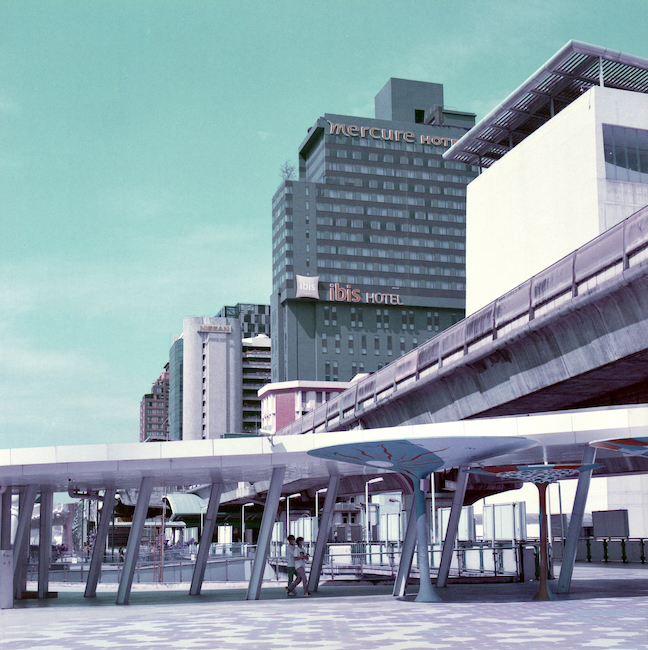Photography Notes: Digital and Film (updated photo caption)
By Graham K. Rogers
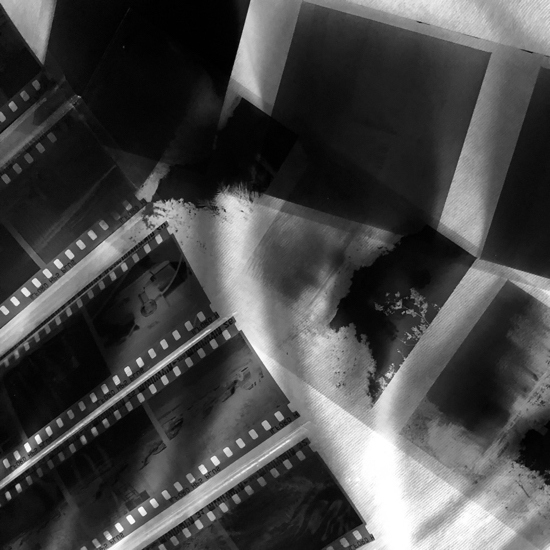
I have not written a comment piece on photography for a long time, but in the last couple of weeks a number of stories caught my eye. I bookmarked them as I usually do, saving them for the right moment. I am looking at ideas around both film and digital photography and the interest in both types of media.
There has been a considerable shift in camera use in recent years, particularly since the arrival of the smartphone. These were not particularly high quality to begin with, but many of those who have bought such devices are not overly concerned with the output as long as it can be posted to social media. As smartphone sales increased there was a decline in the sales of the DSLR, and this was accelerated with the introduction of improved mirrorless cameras.
For now, I am sticking with my DSLR (particularly with the lenses I have acquired), but I have a few film cameras and an open mind about the future. Reading online sources, the healthiest area of photography seems to be lenses. Almost daily a report on a new lens appears and I need to apply the brakes. An enthusiastic review, for example for the LOAWA 14mm f/4 lens for the Nikon F-mount will have me reaching for my credit card.
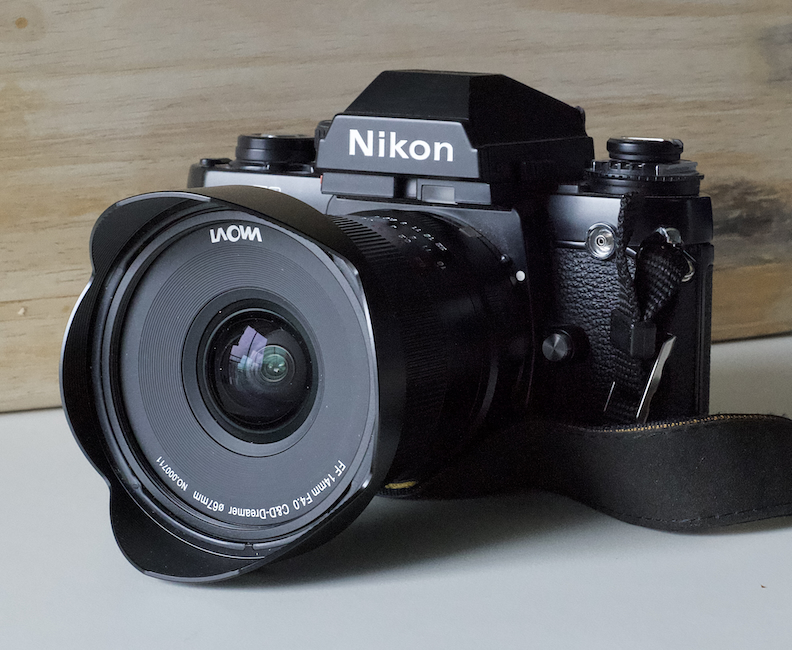
Nikon F3 with LAOWA 14mm lens (corrected caption)
I have stuck to Nikon cameras since my first DSLR, but the company has seen some difficult times in recent years: reduced market share, a factory fire and subsequent closures, as well as the effects from Covid. Mike Smith on PetaPixel reports on Nikon's pragmatic approach to restructuring and the way it sees the future: "outward physical changes to the business were the result of a complete pivot in how it viewed the camera market and led to a laser-like focus on the mirrorless camera".
The Medium-Term Management Plan that it has issued (link in the PetaPixel article) shows "how it is responding to the current challenges it faces" which includes changing its business strategy and prioritizing other areas over the camera business. That does not mean that its camera business is done: there is a refocus on the Z-mount rather than on F-mount cameras (my D850). There is some hope for Nikon with the strategy changes, but there is still work to do.
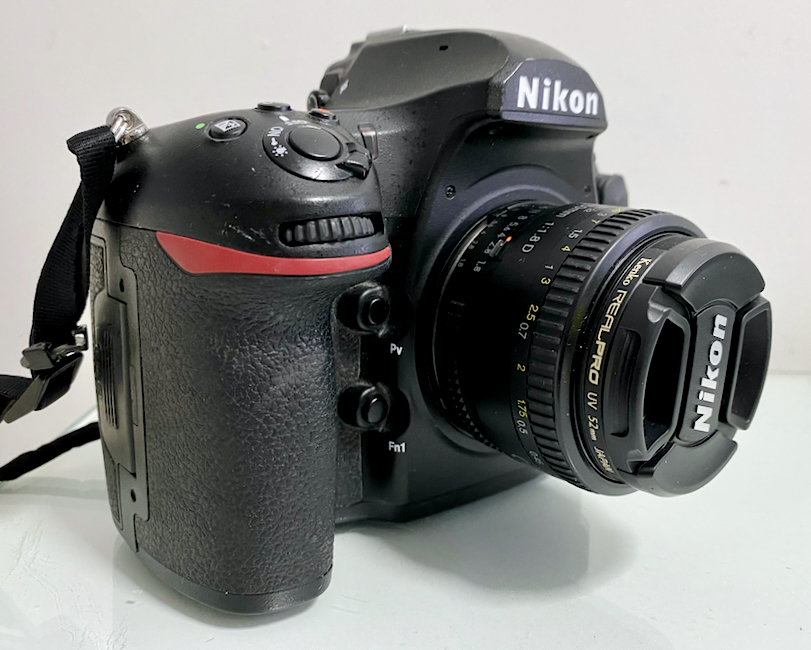
Nikon D850
I had written before that camera companies, and Nikon in particular, should focus on the high end market and leave the plastics to others (like Fuji whose range of instant cameras is much loved by young people). The increased prices could be offset by considering the needs of some users. I resent buying a high end camera with a major feature I never use: video. I thought this was a good idea when I first saw it on the D90, but with my own purchase of D7000 and later my current D850 I have hardly ever used this at all. Almost exclusively I take still photographs: single shots, bursts, focus stacked images, macro occasionally, so the camera is versatile, but if I want video, I will invariably use the iPhone. Others will of course have different needs, but I think there is a good chance that I am not alone in using a DSLR for just photography.
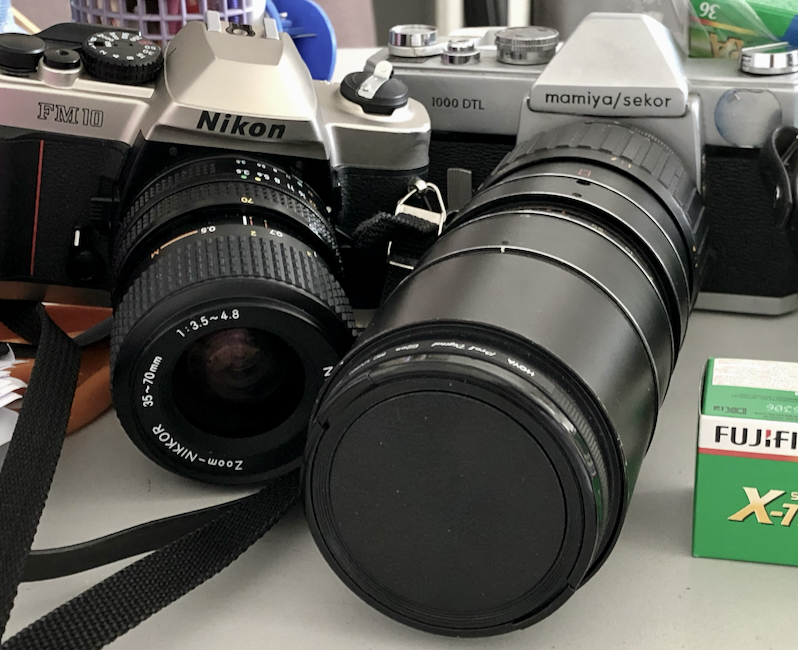
Nikon F10 and Mmiya/Sekor 1000DTL 35mm cameras
My current mix of film and digital is not so much a strategy as a way to enjoy photography in a different way. I tend to use digital output for images that I want to go with online comment, although that does not exclude film: see the examples below. Considering the medium (and size requirements) the iPhone is often just quicker. When I was a kid in the 1950s film was the only medium of course, but digital gave me a different approach. I returned to film photography in recent years because I wanted to readjust my approach: every photograph is an experiment for me. My output is generally better with the DSLR than with my film cameras, but that is not the point for me. An article from Ali Choudry on FStoppers examined the question of which is better - film or digital - highlighting a video from Luke Cleland.
The photographer who works in both media makes strong arguments for both. There is a time for digital and a time for film and the final image is not necessarily the deciding factor. I disagreed slightly with the idea of film back from the lab needing less editing than digital. As I work in RAW my digital output always needs editing, but so do the negatives I have back from the lab. I enjoy the scanning process and the editing that follows to bring out more of what I saw when I took the shot initially. Cleland's enthusiasm and love for both types of photography are a good place to start the debate.
Another debate, particularly in recent years, has concerned the quality of the output from smartphones compared with the DSLR. We should also include high end mirrorless cameras in that too. Alex Armitage on FStoppers wonders if printed output from a smartphone could match what can be produced from a $5000 DSLR. He uses the iPhone 13 and a Canon R5. The normal idea is that the iPhone is OK for online use but for high end printing you really need something, well, high end.
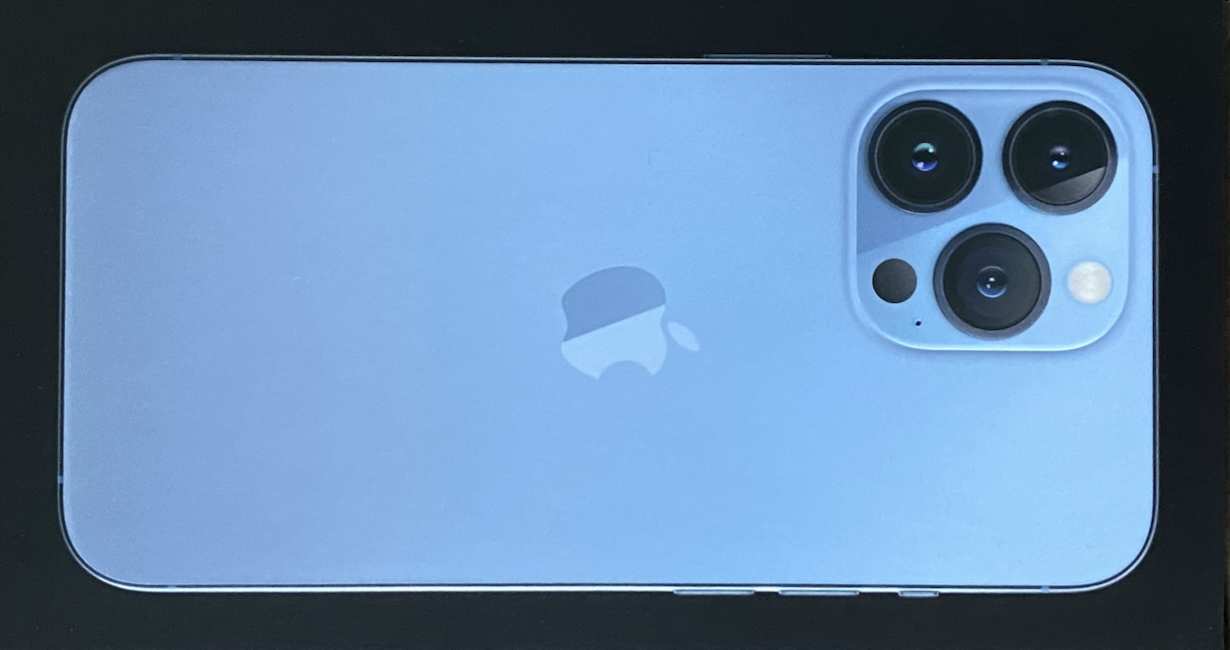
iPhone 13
His back to back tests suggest that for a poster, the DSLR would put out a more acceptable print, but at the smaller size of 16x24 there is less difference, unless you look closely. He also makes the point that many such images would be viewed with a sheet of glass between the image and the viewer, perhaps hiding some of the shortcomings. As he notes, this makes photography more accessible to those who are interested. As we move forward, it is highly probable that output from smartphones will improve too.
Last week I saw several announcements concerning a Kickstarter-like scheme that is being run by CineStill for its new 400Dynamic film (Jaron Schneider, PetaPixel). They have already raised over $650,000, which shows an incredible amount of interest in the medium of film. At the end of Jaron's opening was the comment that this was being expanded to include 220 film.
Most analog film is 35mm (or 135). I have a couple of cameras that use this, but in the past I have also used 110 (thin cartridges which are still available) and 127 for Box Brownie cameras I had a long time ago. I mostly use 120 film now, sometimes called Medium Format, which is not 120 mm wide. The Darkroom has a list of current and recent formats. Some of those still around are hard to find these days. These "numbers correspond to the order early Kodak cameras were released, starting with 101" (PhotoStackExchange).
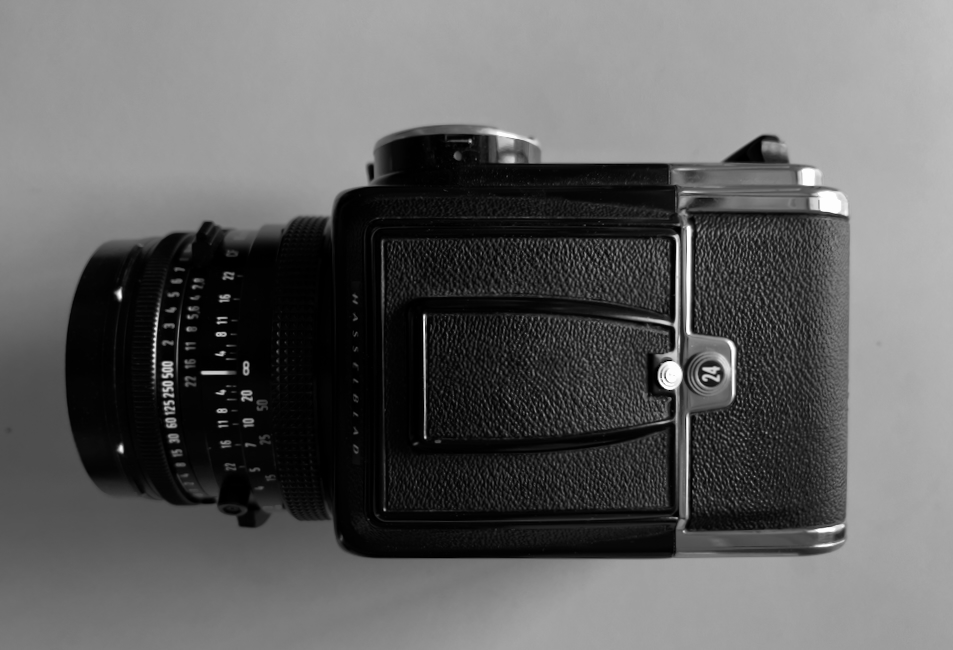
Hasselblad 500c/m with 220 magazine (24 images)
The cameras I use most often produce square images, or 6x6 (56x56mm). One of those cameras, the Hasselblad 500c/m has swappable film magazines (to change the film type mid-reel). One of those I have is for 220 film: the same as 120 but twice as long, which would give me 24 images for the reel instead of 12. I linked to the CineStill site and backed the 220 project, to the tune of $60 for 2 rolls: just under 2000 baht, plus mailing.
As is mentioned in the PetaPixel article that alerted me to the film, this comes at a time when Fuji is announcing price increases and the end of its 120 slide film. Kodak also increased its film prices significantly early this year, while Ilford (whose B&W films are always in my bag and fridge) have recently announced modest increases for some of its films and photographic papers due to knock-on effects from Covid (Stephen Dowling, KosmoFoto).
I use film and digital cameras these days, plus the iPhone, which gives surprisingly good results at times. This is discussed in an article that examines the output (below), but there is always the question, that Ali Choudry (FStoppers) looks at: which is better, film or digital? The video with that article puts forward some good arguments, but these are subjective. What do we want from photography? That can be personal, as it is certainly as far as my output is concerned these days; but sometimes there are other considerations and these are controlled by the final use of the images. A lot of young people here are delighted by the output from their film Fuji cameras (like the older Polaroid), which they share with each other or just keep as memories. Fortunately I do not have to worry about commercial considerations and just take what I enjoy.
I rarely use Kodak or Fuji films and have found several others that I like to experiment with. As well as my regular Ilford choice of SFX200, I also use occasionally Ortho80, FP4 Plus, HP5 Plus, PanF50. Other regulars in my bag are Bergger Pancro 400 and Kosmo Foto Mono 100. I have also experimented with Lomography films, like their LomoChrome Purple.
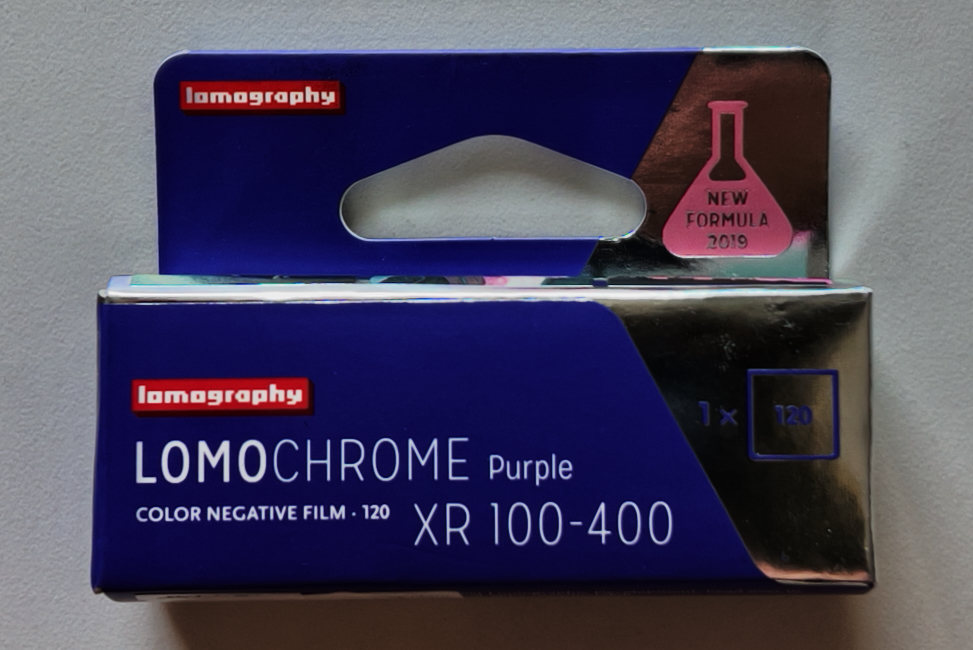
Lomo Purple
There is also a LomoChrome Turquoise, but the first batch sold out and I had to pre-order with delivery expected in September this year. Availability of Lomo films here is not what I would want and a store I go to often usually has just 2 or 3 rolls of 120 Lomo on display: can't sell if the customers can't see it. I order Lomo films online and the Turquoise cost me 498 baht a roll (about $15) plus shipping (free over 6,000 baht). It is also offered in 110 and 135 formats.
Lomo Purple in central Bangkok
Last year I saw that Lomo was offering a film with an unusually low ISO rating: Fantôme8. I had used the Ilford ISO 80 and 50 films with good results, as well as Rollei 25 ISO, but ISO 8 was intriguing. Sadly for me, it only comes in 35mm rolls. I checked the cameras I had for suitability and decided that the Nikon F3 was the best choice. That had a setting for ISO 12 and after advice from EM of Emulsive, I set the camera with +2 stops to work with the film. As expected contrast was high. I wrote this up for EM and this is online at Emulsive with some examples of the output.
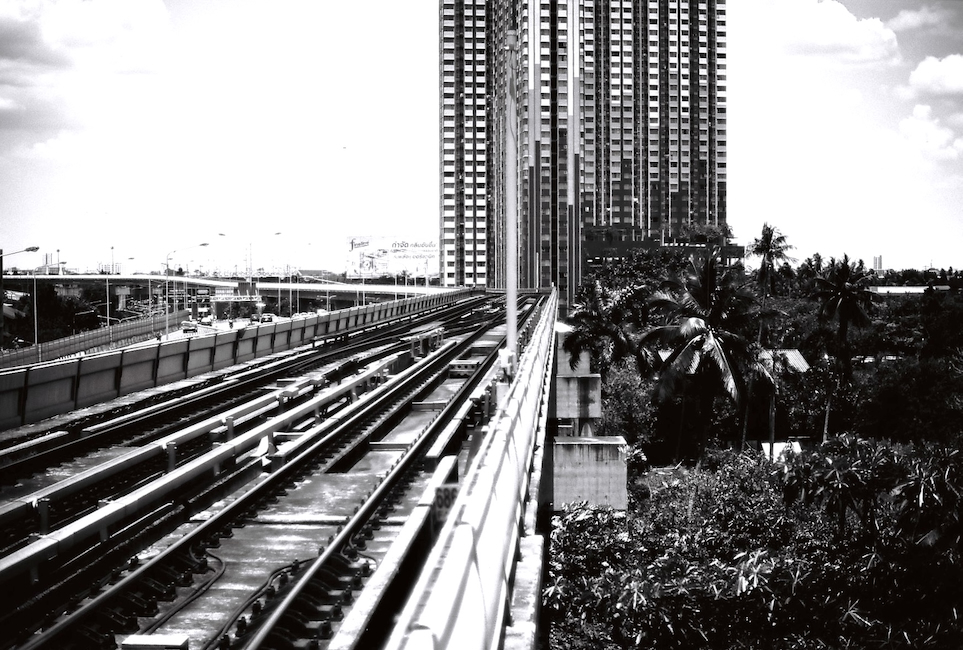
Fantôme8 output at Bangwa BTS Station
Although film is seeing a resurgence, particularly from smaller manufacturers who are producing a wide variety of films, there are few manufacturers making new film cameras so used cameras are becoming increasingly expensive. Prices on sites like eBay and in shops that sell used cameras are rocketing. There are still some gems to be found. Look carefully before buying. Only last year Nikon finally stopped selling its last film camera, the D6, which was a bit of a giant compared to eBay favorites like the F2 or F3. If only they would make these again: fat chance of course. Leica still makes film cameras - at a price - and there are some specialist manufacturers too.
Chroma has a series of cameras that are designed for specific lens sets, but these do not suit me right now. They have just released some cameras for 6x9 and 6x12 output. At around $400 these are not overly expensive, but a buyer would also need a lens (currently Schneider or Mamiya). There are also 6x6 cameras. They also I make larger format cameras. While the Chroma site has details, there is a useful overview from Stephen Downling on KosmoFoto.
One of this site's longtime readers sent an email last week with a link to a memorial Hasselblad Moonshot camera. I was a bit dismissive of the idea at first. There are only two or three of the NASA moonshot cameras in existence here, although there are said to be over 10 on the surface of the moon. They were left there due to weight considerations. It seemed that someone might be trying to make a quick buck out of such a memorial camera. Leica keeps turning out specials and I do not approve of this elitism for a camera - as good as it is - that appeals more to an owner's vanity than to good photographic sense.
The NASA Mercury Hasselblad 500C (I have the 500C/M) has been assembled by Cole Rise of Space Camera and the site says there is only one left (see below). Cole details how he has remade a functional Apollo 11 camera (used by Gene Cernan) and this is more than a gimmick. He explains how he put the project together and the parts he had to remake. 10 replica cameras were made and they have all been sold (the last one is now marked, Sold Out).
There are times when we may become less enthralled with photography. I am finding this currently with the Covid-19 situation along with current limitations: physical and social. Fortunately there are enough articles online to maintain a spark of interest, along with input on apps like Instagram (good and not so good, we can all learn something), Glass and others. On FStoppers, Alex Cooke introduces a video by Mark Denney that "discusses how to handle those periods and come out the other side with a renewed vigor for photography."
Graham K. Rogers teaches at the Faculty of Engineering, Mahidol University in Thailand. He wrote in the Bangkok Post, Database supplement on IT subjects. For the last seven years of Database he wrote a column on Apple and Macs. After 3 years writing a column in the Life supplement, he is now no longer associated with the Bangkok Post. He can be followed on Twitter (@extensions_th)
|









